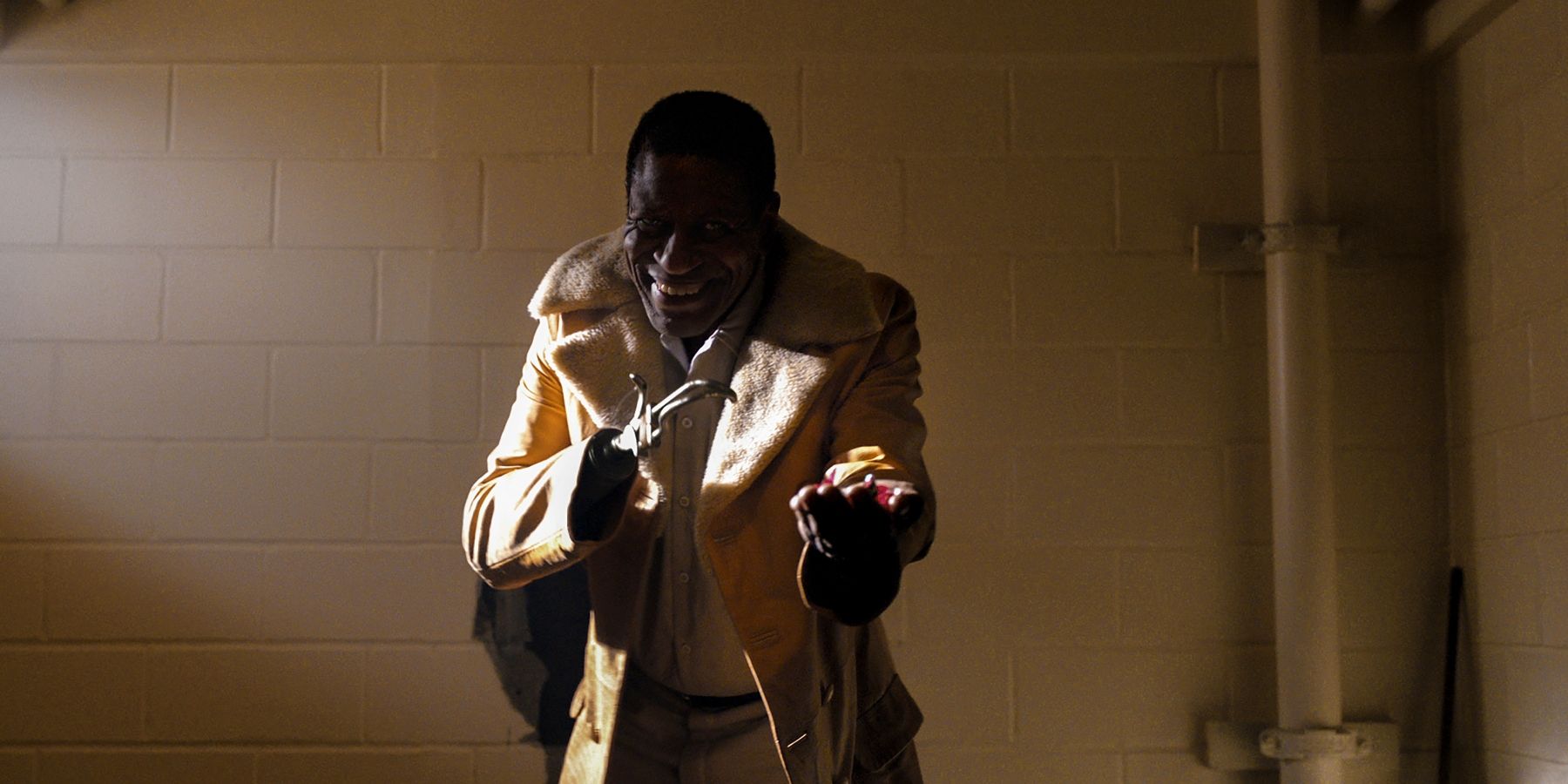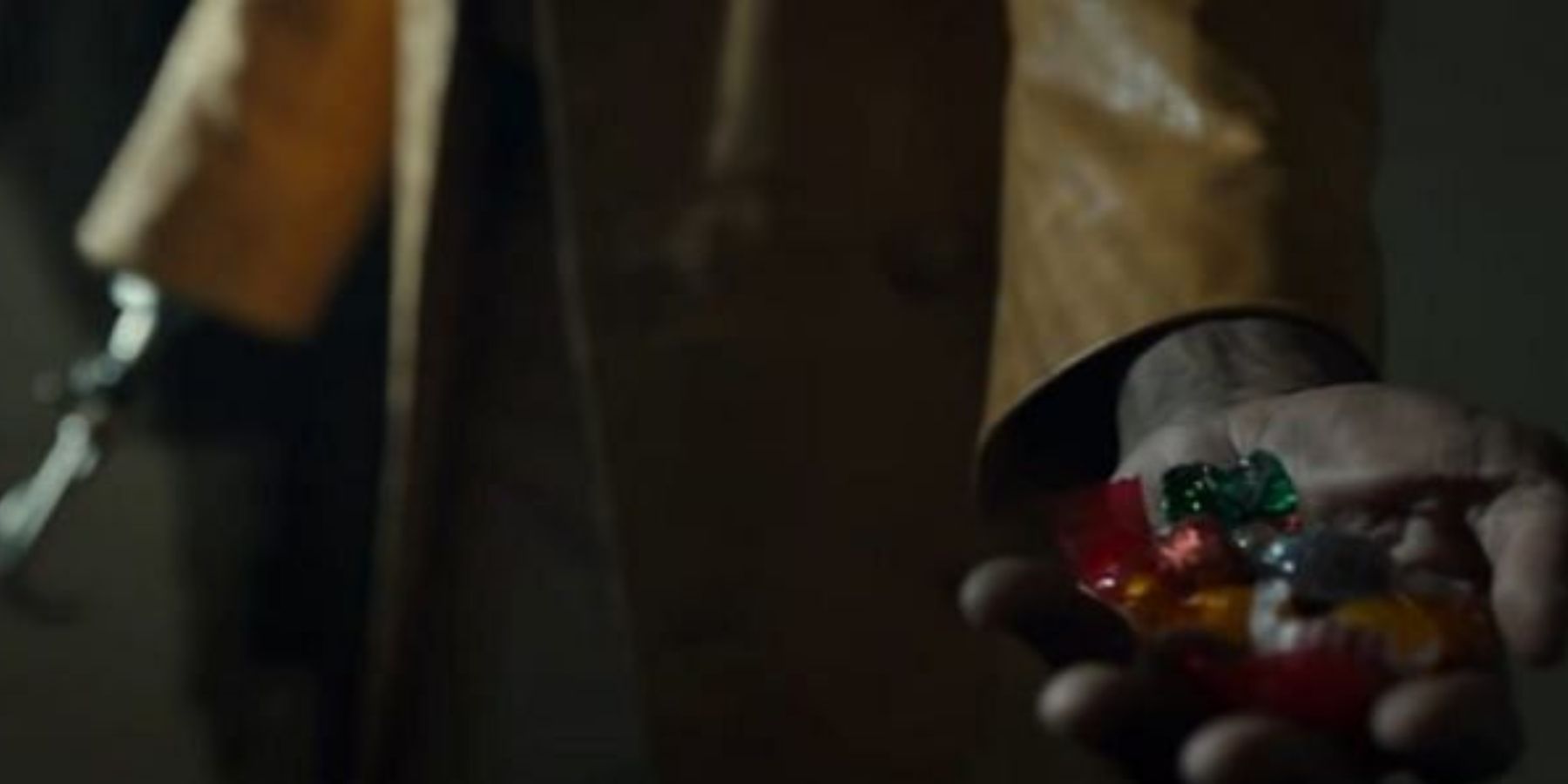Breaking Down the Lore of The Candyman
Nearly 30 years after the original film, and after delays due to the ongoing pandemic, Nia DaCosta's Candyman was just released. It's an interesting film, marketed as a "spiritual sequel" but in reality just a direct sequel to the original, and takes on a lot of metaphors for social and political issues in current times. Most notably, the themes here are systemic racism, gentrification, and police brutality.
Both the original and new films revolve around Chicago and specifically, the city's Cabrini-Green neighborhood. While in the original film this is a low-income housing area, seemingly completely Black and with a lot of gang activity/violence, the new film shows the neighborhood as the now trendy and gentrified area that it is. No matter what though, this area is of course plagued by the "villain" of the film, the Candyman.
The Candyman is introduced in the 1992 films as an urban legend. He's a tall man with a hook hand, and all it takes is saying his name five times in the mirror to summon him, which is of course deadly. University student Helen is doing her thesis on urban legends stumbles upon this story and heads to Cabrini to investigate. Of course, she gets more than she bargained for and ends up plagued by him. In the film, the Candyman is played by Tony Todd who is now a horror legend. His version of the character is named Daniel Robitaille and has a horrific backstory that upon learning, makes the intention behind the character completely clear.

Daniel Robitaille was the son of a slave in the 1800s and was a very talented artist. Because of some successes of his father, they were well-off and his family was widely accepted in their community despite being Black. Robitaille himself made money traveling and painting portraits for wealthy white families. One client paid him to paint a portrait of his beautiful daughter, and the two ended up falling in love and getting pregnant. This was not accepted by the woman's father or their community and they horribly got revenge. Robitaille was tortured and murdered. First, they cut his hand off with a rusty blade. They covered him in honey from local beehives, and the bees attacked him as the townspeople chanted "Candyman."
Up until the new film, Robitaille was the only Candyman. It's revealed in the 2021 story though, that there are actually many versions of the Candyman and Robitaille is only the first. What all of these reincarnations of Candyman have in common, is that they are Black men killed unfairly and brutally by the racist authorities. This allows their body to become a vessel for the Candyman, making them the new reincarnation of the character. It's a very interesting twist on the story, and a wonderful way to expand the lore and rules that exist in this world. It also adds depth to who the character is. Is the Candyman really a villain? Or is the Candyman simply an antihero-type vigilante with questionable methods.
Candyman 2021 does not focus much at all on Daniel Robitaille. Instead, the Candyman in this story is Sherman Fields. Fields was a hook-handed man who lived in Cabrini-Green and was suspected of putting a razor blade into a piece of candy that a white child had. As the police were searching for him, they were alerted to his presence by a child accidentally dropping a piece of candy on the floor in the basement. After finding Fields, they brutally beat him to death right on the spot. Only after he was killed, did another piece of candy with a razor blade in it turn up. This of course means that not only was his death unjustly brutal, but he was never even guilty, to begin with.

Both films also tell the story of one person becoming their version of the Candyman. This is infamously severely misguided in the 1992 original film, the lead character that audiences get to know and eventually see become a type of Candyman is a white woman named Helen. The new film tackles this storyline in a much better way. In Candyman 2021, the main character Anthony is also slowly becoming a Candyman reincarnation. It's his fate, tying all the way back to when he was a baby, and the villain has been chasing him his whole life. Ultimately, in the end, he has to accept it.
All of this is a clear metaphor for a common Black American experience, especially a Black American man's experience. These are men who are actively discriminated against and essentially, lynched. The legend's persistence and durability represent how deeply this racism and discrimination is embedded in society. Despite Anthony being wealthy and a high-class member of society, he's plagued by his history just like the original Candyman Daniel Robitaille was. The character of the Candyman and the new additions to his story embed this message even deeper into these films. It's a sad and confronting truth that these films tackle, and though these themes are distressing they are a reality and they are so important to be aware of.

Post a Comment